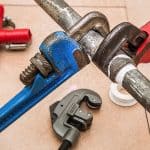Mold has been very useful during the history. Alexander Fleming used it to make penicillin, for example. And mold is necessary for the decomposition of organic matter in nature. But it can also be very, very bad, especially when it becomes undetected in your home. Mold spores easily spread, and you can never completely destroy them. Therefore, it is extremely important to prevent mold in your home.
The mold can appear anywhere: on the carpet, clothes, food, and even in places, you cannot see. For example, the back of the drywall, areas inside the walls around leakage or condensation of pipes and over the ceiling tiles. Mold can also cause allergens and irritants (and, more rarely, toxins) that can jeopardize your health.

What can you do to prevent mold in your home?
The best approach is to prevent mold in your home before it becomes a problem. The key to preventing mold is simple: humidity control.
1. Identify the problematic areas in your home
You cannot stop the mold to get into your house, but you can make your house resistant to mold. Do a complete check of your home. Where are the problems? Are there floods in the basement? Did you notice frequent condensation in the upper window? Is there a stain of water on the ceiling from a permanent leak? Preventing the growth or spread of mold can be simple. For example, you can put a carpet in a wet basement, install products resistant to mold, or repair gutters. Or it may be a matter of large excavation and waterproofing. In any case, check the problem now. It may cost a little money, but it will certainly be more expensive if the mold continues to grow.
2. Dry the damp areas immediately
Mold cannot grow without moisture, so dry wet areas as soon as possible. Seepage into the basement after a heavy rainfall, accumulation from a leaking pipe, even spilling on the carpet should be dried in 24-48 hours. If you had a flood, remove water-damaged carpets, bedding, and furniture, if you cannot completely dry them. Even everyday events require attention. Do not leave wet objects lying around the house, and do not forget to dry the floor and walls after the shower. Do not leave damp clothes in a washing machine where mold can spread quickly. Hang them for drying, outside or in places with good air circulation would be perfect.
3. Prevent mold in your home with proper ventilation
Perhaps your daily home activities encourage the growth of mold in your home. Make sure that activities as simple as cooking dinner, showering or doing laundry do not invite mold. For this reason, you should provide proper ventilation in your bathroom, kitchen, laundry and any other area with high humidity. Vent devices that produce moisture (dryers, cookers) outside. Use AC units and dehumidifiers (especially in humid climates). But, you must make sure that they do not produce moisture themselves. You can prevent that by checking and cleaning them as directed by the manufacturer. Your house can contain moisture inside. So, open the window when cooking or washing dishes or taking a shower, or run the exhaust fan.
4. Equip your house with products resistant to mold
Building a new home or repairing an old one? Use products resistant to mold, such as plasterboard, as well as mold inhibitors for paints. But, make sure the plasterboard is mold-resistant. Gypsum core is covered with fiberglass, which makes the surface very water resistant. Moisture-resistant plasterboard is especially valuable in places exposed to humidity, such as bathrooms, laundries, cellars, and kitchens. Logically, the traditional gypsum panel more susceptible to mold than a paperless one. Besides that, it is also difficult to get rid of mold, and removal and replacement can be expensive.

5. Monitor the humidity in the room
The EPA recommends keeping the humidity in the room from 30 to 60 percent. You can measure humidity using a moisture meter purchased at a local store. You will also be able to detect high humidity by simply drawing attention to potential problem areas in your home. Characteristic signs of excessive humidity are condensation on windows, pipes, and walls. If you notice condensation, immediately dry the surface and find a source of moisture.
6. Clean or repair the gutters
The mold problem can be a simple roof problem that occurs because of full or damaged gutters. Regularly clean roof trenches and check for damage. If necessary, remove them and watch for water stains after storms that may indicate a leak.
7. Improve the airflow in your home
According to the EPA, when the temperature drops, the air is able to hold less moisture. Without a good air flow in your house, this excess moisture can appear on your walls, windows, and floors. Open the doors between rooms, take the furniture away from the walls and open the doors to the closets, which can be colder than the rooms in which they are. Let fresh air reduce moisture and keep mold.
8. Keep mold off houseplants
They are beautiful and help maintain clean air indoors, and mold loves them. Wet soil in indoor plants is the ideal ground for mold, which can then spread to other areas of your home. Instead of getting rid of your plants, try adding some Taheebo tea to the water that you give to houseplants. The oil of this tree, which withstands mushrooms even in rainforests, helps to prevent the growth of mold in plant soil. And you can find it in natural food stores.
Finally, educate yourself in the climate of your region, and how it reacts to moisture. When it comes to preventing mold, there is no single approach. Knowing what works for your climate and your home is an important first step.

What if you cannot prevent mold in your home completely?
There are situations like that, when you have a very humid climate, for example. Then, the best thing is to have home insurance. And if something happens, you can file homeowners insurance claims. A claims adjuster will come to your house to see how big the damage is. And he will also want to know what you did to prevent mold in your home. So, be ready!





